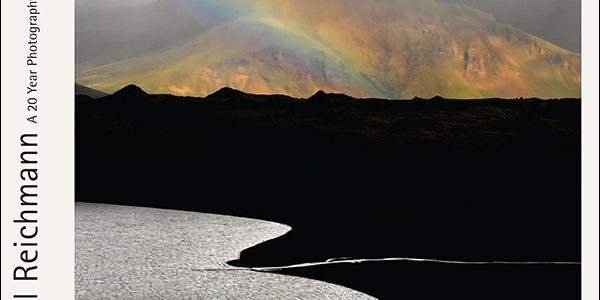Article and Photographs by: Alain Briot
1-Introduction
How important is your tripod? Very important if you want to maximize depth of field and image sharpness at low speeds with any camera. Crucial if you use a 4×5 view camera. I once forgot to take my tripod on a photography trip to the Grand Canyon (I know, I wonder why I did this too. Mistakes happen…) and learned once and for all that a 4×5 is useless for landscape photography without a tripod. Press photographers in the 40’s may have been able to photograph boxing matches with their Linhof, Graflex or Speed Graphic but they benefited from cammed lenses connected to an operative rangefinder, did not have to cope with depth of field from a few inches to infinity and used flash bulbs instead of relying on sunlight at sunset and sunrise for illumination.
All this to say that I swear by my tripods, care for them, and make sure I have the best ones in duplicate versions just in case. Since 1980 I have only used Gitzo tripods. One of my most recent Gitzo tripods, the Explorer 2227, is a remarkable tool and the subject of this review.
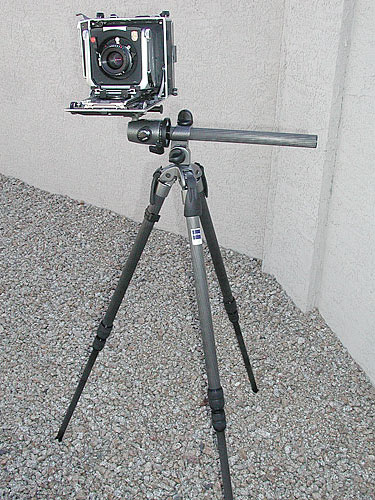
__________________________________________________
2 – A New Type of Tripod
Once in a while a new product comes out which makes you realize you can do more without either spending more money or carrying more gear. Gitzo’s 2227 is such a product. It doesn’t cost more or weight more than other Gitzo carbon fiber tripods of equal size. Yet, it allows you to use a tripod in ways you may have thought of but were unable to until now. These new abilities are particularly useful if you use a 35mm or medium format camera although, as the photographs here show, the 2227 can also be successfully used with 4×5.
Because I do a lot of hiking I try to keep the weight of the gear I carry to a minimum. Tripod-wise this means three things: 1-carbon fiber. 2-the smallest size tripod which will keep my 4×5 stable. 3- A relatively small ballhead. So far, I have used a Gitzo 1228 together with a Gitzo magnesium ballhead 1377M. I recently decided to acquire a second tripod because I sometimes set up a second camera and because it never hurts to have duplicate equipment in case something breaks during a shoot. I could have purchased a larger Gitzo, but instead decided to acquire a “fun” tripod, the 2227, which can do what no tripods have done before so to speak.
__________________________________________________
3 – Let’s Get Down to Business: a Detailed Look at the Gitzo 2227
I paired the 2227 with a Gitzo Magnesium ballhead 1277M making the weight of my 2 tripods nearly similar. The weight of the slightly heavier 2227 is compensated by the smaller and lighter 1277M ballhead. The 2227 has 3 leg sections, compared to 4 leg sections on the 1228, making the 2227 longer when packed. While this is not as practical for hiking it does offer a higher total tripod height. Traditionally, 3 section Gitzos have been taller than 4 section Gitzos. A 4 section version of the 2227 -the 2228- is also available. This model is exactly similar to the 2227 except it has 4 leg sections instead of 3. The 2227 has a maximum height of 67” compared to 65” for the 2228.
So what can the 2227 do that other tripods cannot do? Well, let’s look at some photographs of this tripod “at work” and see for ourselves.
__________________________________________________
4 – Tripod with No Camera
First, here are several views of the Gitzo 2227 alone, without any camera. As you can see, this is a very nice and sturdy looking tripod.
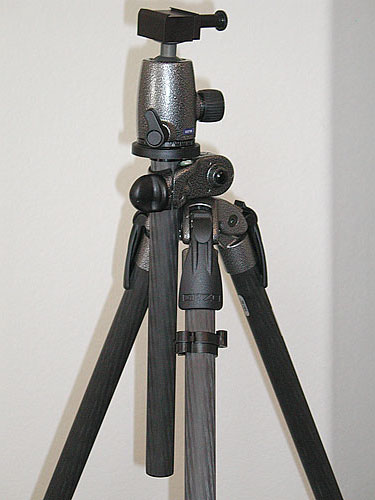
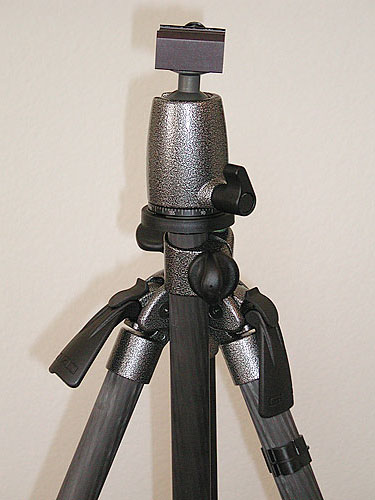
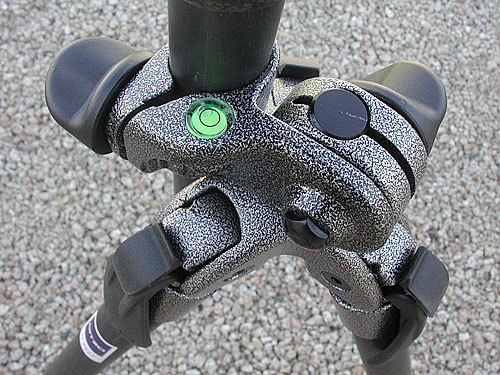
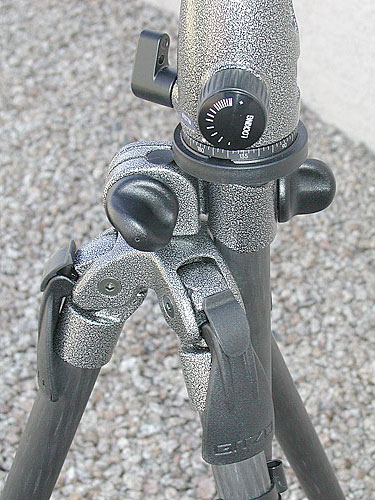
__________________________________________________
5 – Tripod With Camera Upright
Here are views of the tripod with first my Linhof Master Technica 4×5 view camera on it and second with my Fuji 645zi medium format camera on it. As you can see, the 2227 is perfectly able to handle both very comfortably. In practice, in an upright position, neither camera feels like it is going to shake or move while photographing. The fact that the column is off to the side instead of the center of the tripod makes no difference in my opinion as far as stability in concerned. You just have to remember to tighten a couple extra knobs, that’s all. If you always use the center column in the upright position you do not only need to tighten these knobs once. After that you can forget about them and use the tripod as you would any other Gitzo.
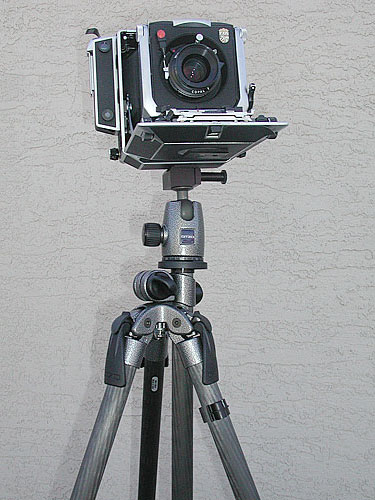
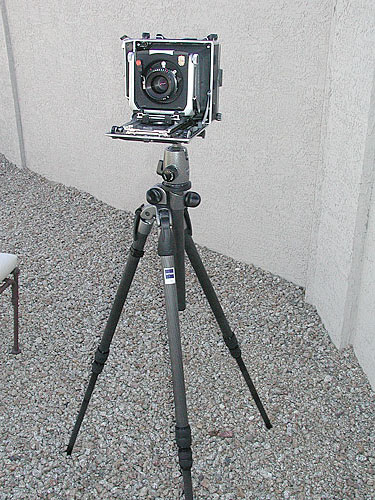
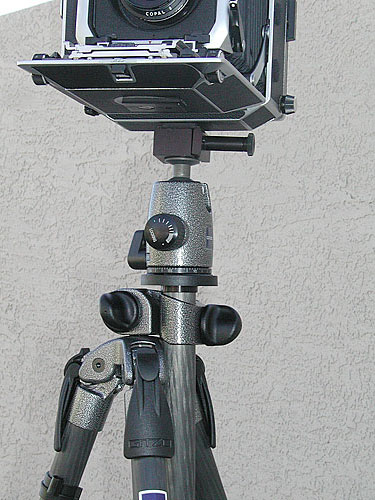
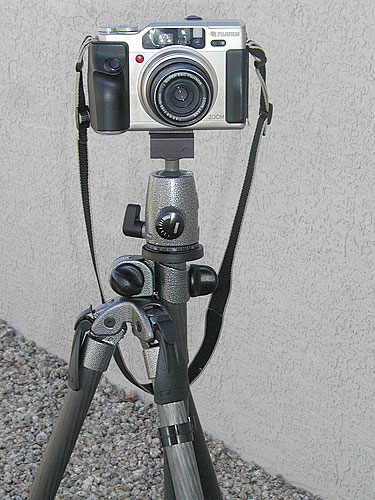
__________________________________________________
6 – Tripod With Camera Sideways
Here is where the 2227 comes out alive and on its own. You can tilt the center column sideways and place the camera off to the side. Why would you do that? Well, of course, because you can with this unique tripod. More seriously, because you do not want, or cannot, move your tripod. This configuration therefore allows you to move your camera while leaving your tripod in the same location. In landscape photography rocks, plants and uneven terrain sometimes mean that there is preciously little real estate to locate your tripod. When such is the case, and you want to move your camera from a few inches to one foot to the side, just tilt the center column and there you are.
This position is suitable for 35mm, medium format and 4×5. However, I would not recommend to use the 4×5 in such a position unless it is absolutely necessary because the weight of the camera is challenging the rigidity limits of this configuration.
When using this configuration keep in mind that it is very important you place the legs in the position they are in on these photographs. One leg must be directly underneath the camera otherwise the weight of the camera will cause the tripod to tilt.
Also note that the camera can be in either vertical or horizontal position. With a heavy camera, such as my Linhof 4×5, I recommend you use the vertical position since the horizontal position places the weight further out and further reduces stability. However, I have tested both options with 4×5 and both are workable as long at you do not extend the center column too far off to the side. With a light 35mm or medium format camera, such as the Fuji 645zi, this isn’t as much of a concern and the center column can be fully extended.
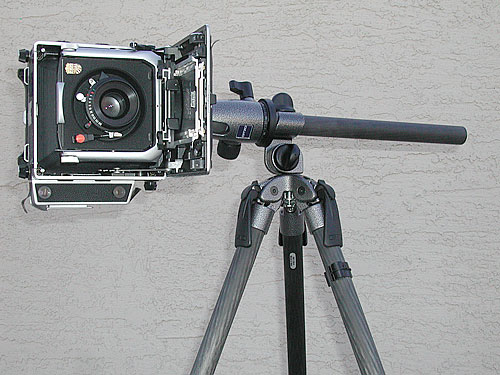
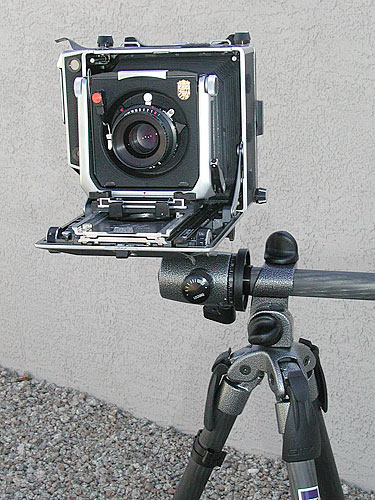
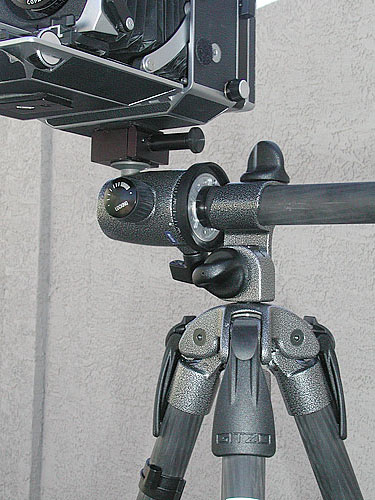
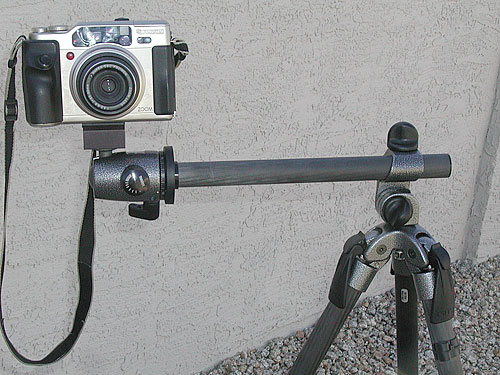
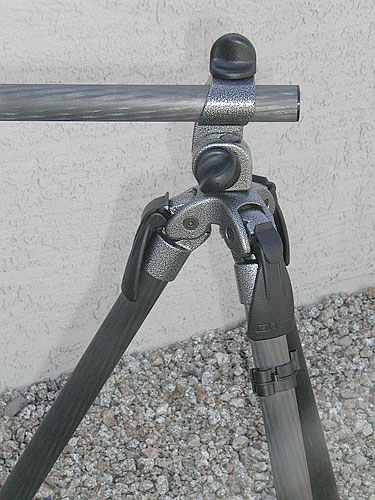
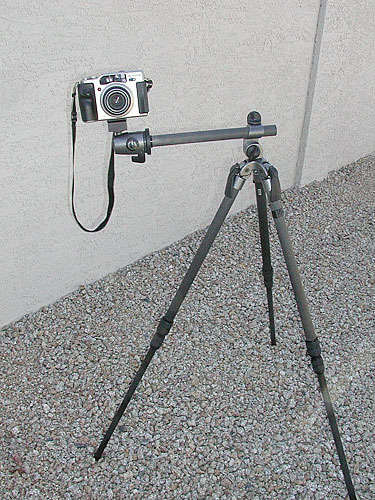
__________________________________________________
7 – Tripod With Camera Pointed Down
For the grand finale here is the 2227 in an acrobatic position with the center column and the camera pointed downwards. This is certainly a great capability for close ups of objects on the ground. Stability is excellent with the Fuji 645 and I believe I could use the 4×5 in this position, although I have not tried. It is certainly fully usable with 35mm.
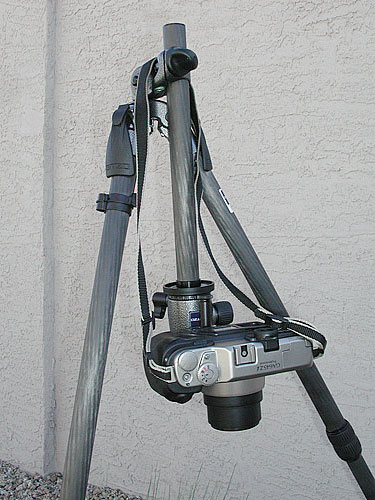
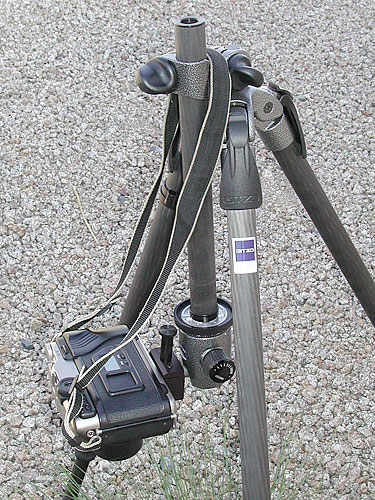
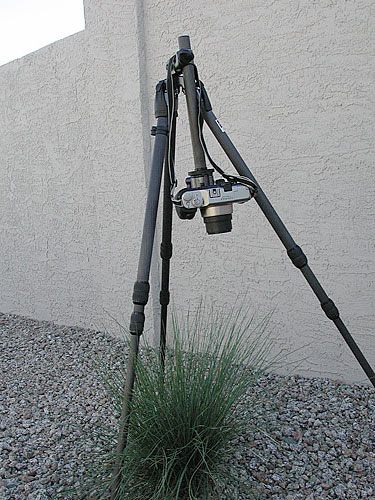
__________________________________________________
8 – Complaint Department
The only thing I found troublesome is the leg spreading mechanism. On all Gitzos there is a catch which stops the legs so they cannot be spread past this predefined point. Further leg spread is possible if you purposefully lift this catch lever. On the 2227 leg spread is infinitely adjustable, without any catch mechanism, from fully vertical to flat on the ground. However, when you want to spread the legs to a normal standing position (which in my case is all I need most of the time), you find yourself having to pay close attention to a task which, so far, could be done almost unconsciously. There are small triangular marking on the top of the legs to indicate where to stop the spread for a vertical position. However, I found that it took me longer than normal to complete this step. I also found that I often spread each leg unevenly. This results in having one or two legs spread further than the other(s) which in turn causes the tripod to be tilted to one side.
__________________________________________________
9 – Conclusion
The Gitzo 2227, and its 4 leg-sections counterpart the 2228, is a wonderful tripod with capabilities which extend what most tripods can do. Is it for you? Why not? Even if you do not need these unique capabilities now, knowing they are available will expand your photographic options and perhaps lead you to create images you wouldn’t have created otherwise. Since the weight and price of the 2227 are similar to Gitzo tripods of comparable size you may want to give it a try?

Linhof Master Technica on sideways center column.
Since the center of gravity is only off a couple inches from the actual center of the tripod
this configuration is actually quite rigid and vibration free.
© 2003 Alain Briot
Beaux Arts Photography
http://www.beautiful-landscape.com
alain@beautiful-landscape.com
____________________________________________________
The fourth installment in Alain’s series — "Light" — will be published in November, 2003
____________________________________________________
You May Also Enjoy...
Thanksgiving to Christmas Donations
A Special Opportunity For Giving and Receiving The Luminous Endowment has announced the winners of its first round of grants to photographer – awarding some
